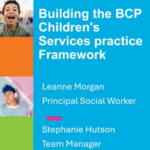
by Cathy Ashley
This month, a local child safeguarding practice review into the horrific killing of 16-month-old Star Hobson is expected to publish its findings. By May, the government’s review into the circumstances behind six-year-old Arthur Labinjo-Hughes’s murder is due to make recommendations around improvements to local and national child safeguarding practice.
The two children’s deaths have of course been devastating for their families, and have dismayed the country. Arthur and Star – and the harm they endured – have been on the minds of many, including all of us for whom safety, care and wellbeing of children is central to, and the motivation for, our work.
Already though we have seen a familiar blame game escalate. One commentator in the Daily Mail pointed the finger at “social workers and police officers capitulating in… a cowardly fashion to the forces of ‘political correctness’”. Meanwhile former government adviser Martin Narey has argued that Arthur’s death exposed flaws in the current approach of social services, which, he said, placed an onus on working with parents instead of ensuring the child’s safety, if necessary, by taking them into care.
So is it right to conclude that we should now abandon the principle of partnership working between state and family in the interests of children – a principle that underpins the Children Act 1989?
‘If we don’t work with families, we lose valuable insight’
Well, no. Why? Because there’s substantial evidence that working with children and their families offers the best means of safeguarding and helping to promote children’s welfare.
First, and key, is that families often know significantly more about their children and their circumstances than the state ever will. If we don’t work with families, we lose all that valuable knowledge and insight. Indeed, it seems relatives of Arthur and Star tried to raise the alarm on a number of occasions.
The importance of engaging with family members doesn’t just apply to those in need of early help. It’s true for children on a child protection plan and indeed those in care.
Related reading
Children’s services ‘overwhelmed’ and permeated by ‘blame, shame and fear’, major review finds
Unless we intend for another 50,000 children on a child protection plan to be removed from their home and become looked after in care, working with the child, their parents and family is critical to keeping them safe.
Unless we plan to return none of the 80,000 children currently in the care system home, and instead keep them all in care throughout their childhoods, then working with children and their families is key to ensuring their safety and wellbeing.
Unless we think breaking the relationships of children in care with their parents, brothers, sisters, grandparents and others who care about them is really working out well right now, then we need to invest in nurturing and building positive relationships.
‘Families seen through a prism of risk are too readily discounted’
Second, there are some people who are deliberately cruel and sadistic to children but, thankfully, they are rare. As Simon Howarth wrote in his excellent article last month, most families in the child welfare system are struggling to parent in conditions of adversity.
Analysis of child protection plans confirms most children are on a child protection plan as a result of neglect or emotional abuse – and the number of children that applies to has risen by more than a third since 2013. A small minority (14%) are on a plan because of physical abuse, sexual abuse or multiple factors, with the number having declined since 2013.
Most parents care about their children even if they may need support and help to safely care for them or prevent crises from escalating. Partnership working allows for practitioners and families to develop a relationship. It enables practitioners to get to know the family, to provide high support and yes, high challenge. The collapse in early support and preventative services, the turnover of social workers, and high reliance on temporary agency staff have consequences.
Third, as Professor Carlene Firmin’s work on contextual safeguarding demonstrates, for some young people the risk of significant harm doesn’t come from within their families. Parents and carers may have little understanding or influence over these contexts. Extra familial harm, such as involvement with gangs, can undermine parent-child relationships and blaming families in such circumstances can extenuate the harm the child faces.
Fourth, overall the state is not a good corporate parent or grandparent. That is not to minimise the dedication of individuals working within the care system or the achievements of some young people, but in the main outcomes are poor. Research by Professor Amanda Sacker spells this out, including earlier death rates compared with the rest of the population.
When families are only seen through the prism of risk and harm, then we also too readily discount them as a resource. This includes those wider relatives who may be critical sources of support, and those who are prospective carers for children unable to remain at home.
To side-line them flies in the face of evidence that children raised in kinship care in the main do better than those in unconnected foster or residential care – and report feeling loved and more secure.
‘The system harshly judges those it should be there to help’
Far from partnership working being the norm, I would challenge that it is insufficiently embedded in our child welfare system.
Too often we hear of children and families being repeatedly assessed as a substitute for support. There are now more children in the care system than at any time since 1985. In 2018, Family Rights Group facilitated a sector-wide Care Crisis Review. We found:
- Lack of resources, poverty and deprivation are making it harder for families and children’s services to cope.
- Children and families are too often not getting the help they need early enough to prevent difficulties escalating.
- A culture of blame, shame and fear has permeated the system, affecting those working in it as well as the children and families reliant upon it.
- The environment is increasingly one of mistrust and risk adversity, prompting practitioners to seek refuge in bureaucratic and procedural responses.
These challenges have been amplified during the pandemic. We are currently in a position where those who the system should be there to help, such as young parents who were themselves in the care system, or parents who are domestic abuse victims, are often the most harshly judged and treated by it.
Meanwhile depleted children’s services funds are being spent on commissioning hugely expensive, often inappropriate placements for small numbers of children – some of them from companies making excessive profit margins.
To jettison the principle of partnership working between families and the state would be to the severe detriment of children. Instead, our focus should be turning that principle into an everyday reality.
Cathy Ashley is chief executive of the Family Rights Group charity



 Bournemouth, Christchurch and Poole
Bournemouth, Christchurch and Poole  Hampshire County Council
Hampshire County Council  Oxfordshire County Council
Oxfordshire County Council  South Gloucestershire Council
South Gloucestershire Council  Wokingham Borough Council
Wokingham Borough Council  Webinar: building a practice framework with the influence of practitioner voice
Webinar: building a practice framework with the influence of practitioner voice  ‘They don’t have to retell their story’: building long-lasting relationships with children and young people
‘They don’t have to retell their story’: building long-lasting relationships with children and young people  Podcast: returning to social work after becoming a first-time parent
Podcast: returning to social work after becoming a first-time parent  How managers are inspiring social workers to progress in their careers
How managers are inspiring social workers to progress in their careers  Workforce Insights – showcasing a selection of the sector’s top recruiters
Workforce Insights – showcasing a selection of the sector’s top recruiters 

 Facebook
Facebook X
X LinkedIn
LinkedIn Instagram
Instagram
I totally agree with Cathy Ashley but am despondent that the system will change because, as she says in this report. the fact is there are huge profits being made out of the harsh and brutal decisions of local authorities backed up by the Family Courts. Victims of domestic abuse, their families don’t stand a chance and most importantly they and their children’s lives are being destroyed by these judgments. The government needs to act on the injustice taking place.
This is not how Child Social Care should be in this country with so much attention and money spent on funding placements for children instead of being more accepting of the dynamics of family lives and providing consistent, ongoing support so more children can live safely with their birth families.
Well said
It is well established that emotional harm and neglect cause significant and lasting harm to children and yet it seems to be minimised in this article.
Likewise the claim that evidence shows that care harms life chances has already been countered with an acknowledgement from the Chair of the Care Review that pre care abuse and neglect has a significant impact on these outcomes.
Taking sensible and achievable steps to retain local authority foster carers would reduce the need for expensive external provision.
Well spoken Cathy, unless the professional working in children services work in partnership with the parents and families who are in need of their services, the outcomes for these children and their families will remain bleak.
Thank you for being a champion for children and their families.
Cathy Ashley is right to assume that family support is part of child protection work. However, there are problems for social workers in establishing trust and genuine partnership.Social workers who are open and explicit about what they are doing have a greater chance of developing a meaningful relationship with parents. The parents’ perspective must be understood but not necessarily accepted. ‘Partnership working’ means that social workers need the skills in saying things to parents that are difficult for them to hear and supporting them in making the necessary changes.
Thank you Cathy, we need to appreciate more the strengths and commitment, often in crippling circumstances of birth families and their relatives. The stigma felt by children and young people in the care system cannot be erased, no matter how loving, how well trained and however many standards we score well on, even Foster Care is no substitute to family care. I know that most of my colleagues would agree, it would be better if substitute carers were surplus to requirements. Our Organisation, Assurance Parents and Carers is speaking to the ‘recruitment crisis’ January 13th Public Policy Exchange with an upbeat message about strengthening communities and using social aunts and uncles for shared care at the weekends to model conscious parenting and signpost the voluntary sector so to support children and families on the edge of care.
Interesting range of perspectives in this article, which suggests some services may need to consider what they mean by ‘working in partnership.’ A trauma-informed Restorative Practice approach involves working ‘with’ families in a way that sets reasonable expectations/challenges however at the same time providing the right level of support for them to meet/achieve these. Too many service take the stance of doing things ‘to’ others or doing too much ‘for’ others. Both of these approaches objectify others rather than enabling them.